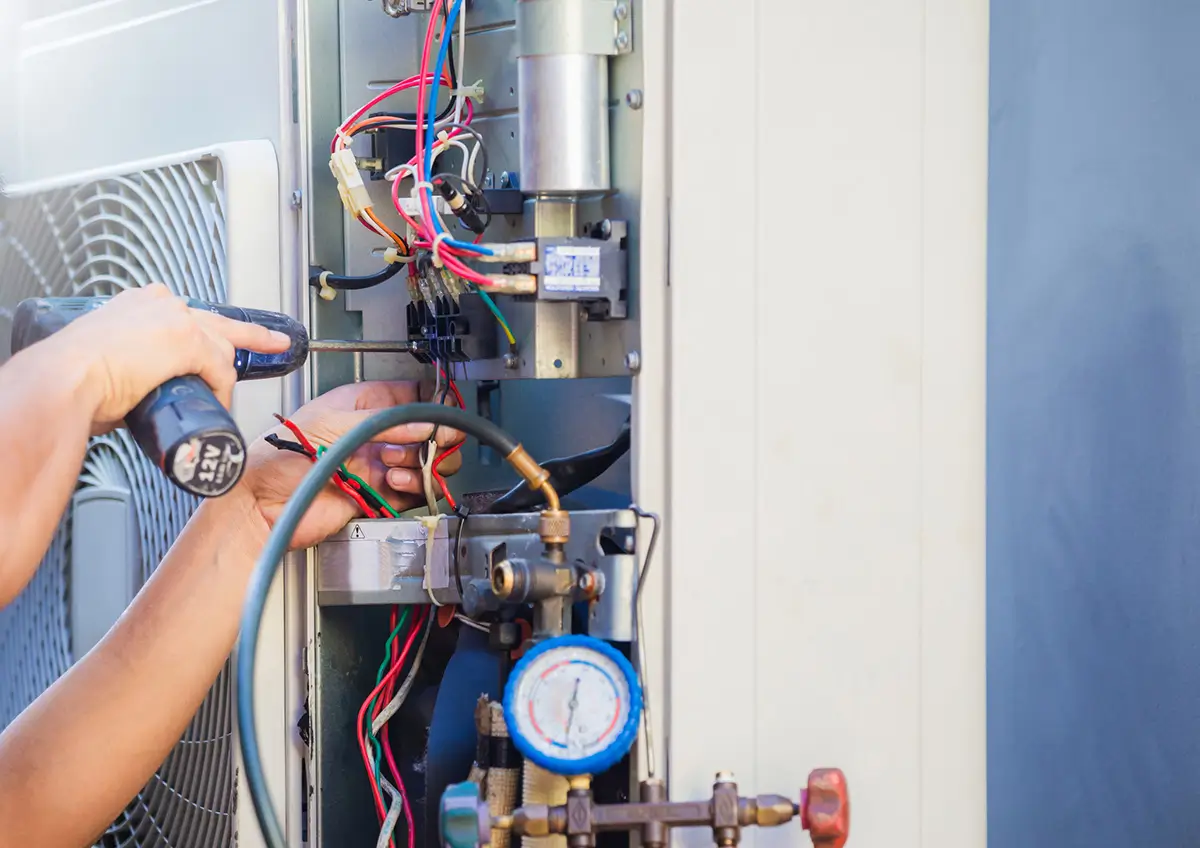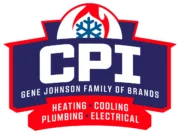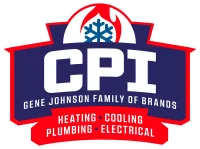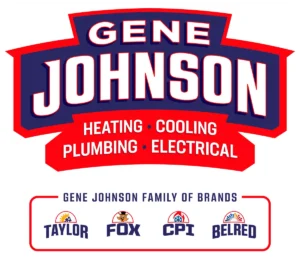Why Does My AC Keep Tripping the Breaker?
As the summer thermostat gradually gets dialed higher and higher, the last thing any homeowner wants is their air conditioning system repeatedly throwing in the towel by tripping circuit breakers. One moment you’re basking in cool relief, the next everything abruptly powers down as electric safeguards kick in against potential overloads. While an occasional breaker trip might seem like a mere inconvenience, that telltale switch constantly flipping signals something’s amiss requiring your full attention.
From compressor failures and overheated motors to excessive vibrations and electrical arcing, there’s quite a few potential culprits behind why your AC might be taxing its breaker’s limits. And depending on the root cause, simply resetting that switch could just be a band-aid ignored at your system’s peril. As we dive deeper into this vexing issue, you’ll learn why prompt investigation becomes critical for protecting both your cooling investment and your home’s electrical infrastructure.
With a combination of basic troubleshooting techniques and professional insight, Whatcom and Skagit County residents can regain command over their home’s thermal comfort. A consistently running AC system awaits – let’s troubleshoot those stubborn breaker trips!

The Role of the Breaker and AC System
Before we dive into why your air conditioner may be tripping its circuit breaker repeatedly, it’s important we first understand the electrical role these safeguards play. Your cooling system is essentially a high-capacity energy hog that cycles substantial electrical loads to transfer heat and provide cool indoor air. If simply maxing out the thermostat worked, life would be easy!
In reality, your AC’s electrical needs must maintain a balanced flow between the energy it consumes and the output required for proper cooling capacity. The circuit breaker acts as that critical balancing point. It manages incoming electrical loads through your AC’s various cooling stages while simultaneously protecting the system from any dangerous imbalances that could damage components.
Equipped with precision calibration, your breaker is designed to cut electricity flow in the event of a malfunction or if your AC exceeds its safe operational amperage. This overload safeguard helps prevent fires, shortages, or permanent equipment failure – but it also alerts you that something needs to be addressed before continuing normal cooling operations.
Essentially, anything from a worn compressor motor to low refrigerant levels can potentially disrupt your AC’s finely tuned electrical efficiency. And when incoming/outgoing energy demands no longer stay balanced during those cooling cycles, the breaker may frequently trip as an important protective response.
So while resetting that plunged lever might seem like a quick fix, ignoring any deeper underlying issues could eventually leave you sweltering without AC entirely. Taking a closer look at potential causes and some basic troubleshooting steps will go a long way toward protecting your investment.
Identifying Common Causes
When your AC unit trips that circuit breaker for the umpteenth time, narrowing down the root cause effectively separates the serious issues from the relatively easy fixes. While some reasons like leaves blocking airflow are simple homeowner resolves, other underlying problems like electrical shorts require professional expertise. Let’s examine some of the most frequent offenders worth investigating.
Electrical Overload
One of the primary reasons circuit breakers dutifully intervene is to prevent hazardous electrical overload conditions from occurring. As your air conditioner’s compressor motor labors against increased heat levels, frigorific charge imbalances, or other accumulated stresses, it can start drawing excessive amperage from your home’s electrical service panel. This overcurrent scenario trips that breaker’s internal electromagnet open to protect components from burning out.
Wiring Issues
Seamless electrical flow is essential for your AC’s optimal performance, which makes any deteriorating wiring connections, undersized circuit gauges, or power feed problems a prime culprit for breaker arcing. Vibrations from normal operation can loosen terminals over time, while older aluminum wiring develops increased resistance – both leading to overheating hot spots that overwork breakers. Verifying sound wiring remains critical.
Component Failures
Of course, many of your AC’s core cooling components directly influence those electrical load demands too. When compressors or fan motors start wearing out through age and overuse, they draw more electricity yet deliver diminishing returns on actual operational output. This performance discrepancy quickly manifests itself through taxed breakers regularly giving up the ghost.
Dirty Components and Filters
You’d be surprised how much of an impact a little household dust and debris can have on your air conditioning system’s overall electrical efficiency. Grimy condenser coils and obstructed airflow from clogged filters force those internal components to work harder just to achieve the same cooling. That increased strain equates to more electrical consumption – potentially more than your breaker’s rated threshold can handle.
Refrigerant Problems
Finally, any refrigerant leaks or improper charge levels can wreak havoc on your system’s electrical performance similarly. Low refrigerant supply forces compressors to work overtime while humidity fluctuations condense additional liquid back into fan coils – both overworking critical components. Those amplified loads start mimicking electrical overload conditions that overcompensated breakers have to shut down.
Quite clearly, there’s an extensive variety of potential culprits that could be driving your AC to essentially “use” more electricity than what your circuit panel can safely regulate through its circuit breakers. Investigating which one applies becomes critical not just for regaining consistent cooling, but also for protecting your electrical infrastructure.
Troubleshooting Tips
Once you’ve isolated the potential culprit behind your AC’s breaker-tripping behaviors to one of the more common offenders, it’s time to start walking through some basic troubleshooting techniques. Many of these steps can be safely tackled by the reasonably handy homeowner ready to get their hands dirty. Just exercise caution around any exposed electrical components and know your limitations.
Airflow Inspections
For repeated breaker trips potentially linked to accumulated grime buildup or obstructed airflow, your first line of attack should focus on a thorough unit inspection both inside and out. Outside, clear away any leaves, dirt, or landscaping growth crowding your condenser cabinet that could be restricting airflow. Use a garden hose to rinse off any accumulated dust buildup between those fins too.
Inside the home, check all air returns and replace even slightly dirty air filters that could be forcing your blower motors to work harder. You’ll want to also inspect those indoor cooling coils using an approved no-rinse cleaner solution to remove any built-up gunk.
Electrical Verifications
If those airflow corrections don’t stop the breaker from punting, it’s time to start thoroughly inspecting your AC’s various electrical connections and wiring runs. First, ensure the circuit breaker itself is rated high enough to accommodate your cooling system’s maximum amperage load rating found on its data plate.
From there, use a multimeter to check incoming voltage readings at the disconnection box with the unit running. Any suspicious dips indicate wiring problems between your panel and condenser that require professional diagnosis. While you’re testing voltages, megger any reasonably accessible wiring connections too for potential hot spots caused by increased resistance.
Mechanical Assessments
With electrical distribution channels ruled out, you’ll want to turn your focus toward inspecting key mechanical components that factor into amperage draws. Outside the condenser cabinet, listen for any unusual clicking, buzzing, or grinding noises emanating from either the compressor or condenser fan motor upon startup. Those symptoms could indicate imminent failure from worn-out core components.
The same applies to your indoor air handler fan and blower too. Any squeaking or slapping noises likely pinpoint deterioration in shaft bearings or blower wheel assemblies. Those compromised parts force motors to work harder against increased friction or interrupted airflow – overtaxing electrical demands.
Control System Evaluation
Finally, any shorts or malfunctions in your AC’s run capacitors or electronic control boards could easily trigger erratic overcurrent situations overwhelming breakers. You can test run capacitor ratings using a multimeter while the unit is powered down. For control boards, look for any physical damage like scorching or moisture exposure that points to internal shorts.
When in doubt, always err on the side of caution and bring in a certified HVAC professional to lend their experienced eyes and diagnostic equipment. While you can tackle much of the preliminary inspection and assessment work yourself, their expertise ensures any lingering electrical hazards or deeper component faults get resolved comprehensively. Prolonging breaker trips ultimately jeopardize your cooling investment.
When to Call a Professional
While many potential causes behind your AC’s breaker-tripping behaviors can be initially investigated through basic homeowner troubleshooting and maintenance, there are certain scenarios where it becomes imperative to loop in professional HVAC expertise. Their advanced training, specialized equipment, and experience ensure any lingering issues get resolved comprehensively while protecting you from potential safety hazards.
Electrical Mysteries
Any time your initial voltage testing, wiring inspections, or breaker verifications hint at deeper electrical riddles beyond a simple loose connection or undersized circuit, call in the pros. Outdated aluminum branch wiring, corroded terminals, junction box deficiencies – modern HVAC systems require specialized diagnosis tools and mastery to evaluate complex electrical circuits seamlessly.
Precision Measurements
Speaking of specialized tools, certain key diagnostic procedures like assessing compressor amp draw through inrush, running load testing, or thermometry demand equipment and experience only certified technicians possess. Their precision measurements are invaluable for catching impending mechanical failures before they spiral into expensive repairs.
Refrigerant Handling
Under federal EPA regulations, only certified HVAC professionals can legally handle the recovery, recycling, or recharging process for AC system refrigerants due to their potent greenhouse gas impacts. If low refrigerant levels seem to be driving your breaker issues, a technician’s expert management of this carefully controlled substance becomes mandatory.
Component Replacements
Of course, anytime your HVAC tech deems an expensive air conditioning component like the compressor or condenser fan motor unsalvageable, their knowledgeable oversight throughout the entire replacement and installation process is invaluable. Improper reassembly or incompatible new hardware choices could just exacerbate breaker problems further.
Intermittent Diagnoses
Sometimes those breaker trips seem to occur intermittently for no apparent reason you can pinpoint through basic inspection or testing alone. In cases like this, an experienced professional’s ability to set up extended monitoring and diagnostic equipment provides the solution-clinching insights your initial walkthroughs missed.
While conscientious homeowners can certainly tackle the preliminary analysis and cleaning maintenance to help resolve AC breaker issues themselves, there inevitably reaches a point where a trained technician’s expertise is required to protect your investment and home safely. When uncertainties linger, looping in a local pro provides the ultimate peace of mind.
Preventative Maintenance and Regular Inspections
An ounce of prevention truly goes a long way when it comes to avoiding those nagging air conditioning breaker trips. While some causes like electrical component failures can strike at random, many reoccurring issues stem from poor system maintenance over time. That’s why prioritizing seasonal preventative care and regular inspections should be at the top of every homeowner’s checklist.
At the very minimum, enlisting professional HVAC technicians for thorough air conditioning tune-ups once or twice per year provides major benefits. Their methodical inspections ensure that key components like compressors remain in peak operating condition while identifying any developing issues before they become major. They’ll meticulously clean compromised condenser coils, inspect electrical connectors, and verify refrigerant charge levels to factory specifications.
More importantly, these routine professional maintenance checks can often diagnose and resolve any potential electrical gremlins behind those disruptive breaker trips before they spiral out into costly repairs or replacements. From clearing debris blocking airflow to identifying loose wiring terminals, an experienced technician’s analysis frequently ferrets out underlying problems prematurely.
For the handy homeowners comfortable tackling some basic maintenance between professional visits, implementing a disciplined cleaning routine around your condenser unit proves immensely beneficial too. Clearing blockages around the outdoor cabinet vents and rinsing off any accumulated debris prevent unnecessary strain that might otherwise trigger breaker overload issues. Maintaining that steady airflow maximizes electrical efficiency.
Additionally, utilizing a simple electrical contact cleaner designed for household electronics helps eliminate grimy buildups that could eventually lead to breaker arcing. Just be sure to disconnect power sources completely before inspecting any electrical connections yourself.
The proactive approach of disciplined AC system maintenance often pays dividends beyond just deterring breaker incidents. It helps extend the overall service life of your entire heating and cooling system while ensuring uninterrupted comfort through another grueling summer heatwave. And at the end of the day, an air conditioning unit operating at peak energy-efficient performance eliminates untold future repair costs.
Don’t Sweat Repeat Breaker Trips: Trust the Certified Pros at CPI!
When your home’s AC unit has worn out its welcome with the circuit breaker, frantic resets and quick fixes simply won’t cut it anymore. From electrical overloads and mechanical breakdowns to refrigerant woes and airflow obstructions, ignoring that persistent breaker tripping is flirting with a premature system failure you can ill afford.
For homeowners throughout Whatcom and Skagit Counties, the clear solution lies with our certified HVAC team right here at CPI Plumbing & Heating. Our seasoned technicians possess the advanced training, specialized diagnostic tools, and real-world experience to comprehensively diagnose even the most elusive breaker trip offenders.
More importantly, our values of integrity and transparency ensure you receive ethical repair recommendations and lasting fixes – never unnecessary equipment upsells. When an AC component replacement does become unavoidable, our skilled installation workmanship protects your investment.
Don’t resign yourself to sweaty sleepless nights from a broken AC! Call the trusted professionals at CPI Plumbing & Heating at 360-822-9306 and restore your cooling peace of mind today.


